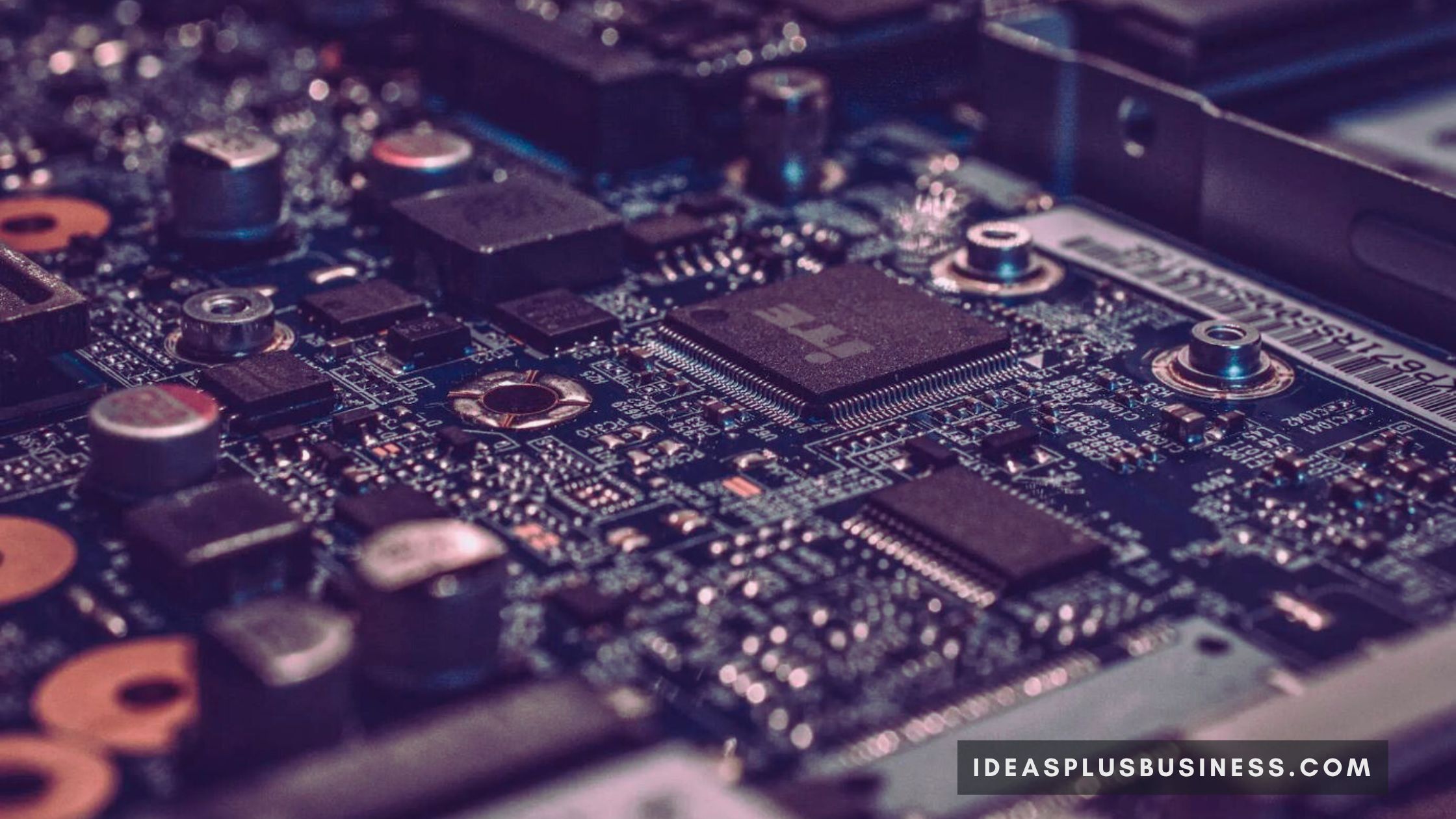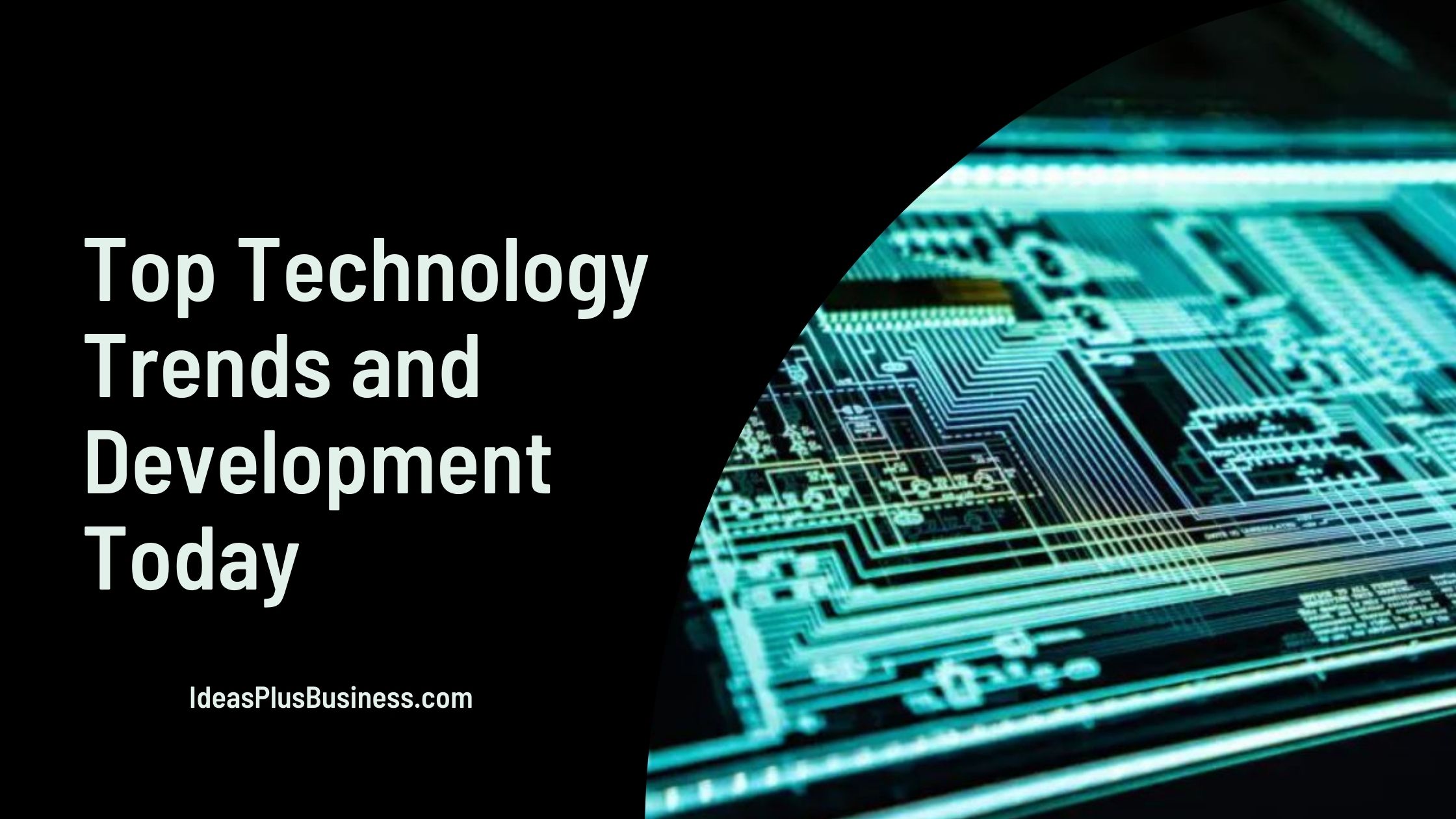The most major technological innovations are predicted to affect our lives in the following year as the future unfolds. We may expect considerable technical advancements during the next 10 years.
A good example is quantum sensing applications, which have the potential to revolutionize everything from materials science and drug discovery to navigation and weather forecasting. These advancements promise to unlock a deeper understanding of the world around us and open doors to previously unimaginable possibilities.
7 Top Technology Trends
The world of technology is always changing and evolving. Here are the top technology trends and developments today. Learn more about these technologies and their implications for your organization.
1. Virtual and augmented reality
Augmented reality is a type of computer-generated imagery in which a user may see a virtual item or picture in the actual environment. This is sometimes referred to as a confusing reality. It is related to virtual reality technology.
Augmented reality is a hybrid of the physical and virtual worlds. It is sometimes referred to as a confusing reality. It lets you interact with the actual environment while seeing a virtual item or picture.
Many applications have made use of augmented reality. Among the most common applications are:
- Augmented reality may be used to provide a virtual tour of an area.
- Medical – Doctors and surgeons utilize augmented reality to better comprehend human anatomy.
- Virtual training – Augmented reality may be used to instruct and educate pupils.
- Construction – Augmented reality may be used to construct a 3D representation of a structure or complex.
- Gaming – Augmented reality may be used to create a virtual environment for video games.
- Google Cardboard – This software allows you to experience the natural world through the camera on your smartphone. It is also compatible with Google Cardboard.
- This will also have applications for outsourcing IT Support.

2. Artificial Intelligence (AI)
The technology that enables robots to think like humans is known as artificial intelligence. It is the next phase in technological advancement. AI is being employed in a variety of businesses. Among the most common applications are:
- Automation: AI may be used to automate a variety of jobs. This may be applied in a variety of businesses.
- Medical – Artificial intelligence is being applied to develop better medical equipment.
- Robotics – AI may be used to develop robots capable of performing a variety of activities.
- Machine learning entails using AI to develop a computer system that can learn on its own. This is also referred to as machine learning.
- Chatbots – AI may be used to develop a computer system that can converse with a user.
- Speech recognition – AI may be used to automatically transcribe speech. This will make it easier for you to read a text and take notes.
- Bot Detection – AI is becoming the number one technology to detect
3. Quantum Computing
Quantum Computing 2023 is a year of new developing technologies, with quantum computing being one of the most prominent. This is a cutting-edge computer science topic that is always changing, so check back frequently for fresh information. In the meantime, here are some fundamentals to get you started.
Quantum computers are fundamentally different from the computers we use today. They can execute specialized tasks quicker than traditional computers and store more information. One of the most fascinating aspects of quantum computers is their potential to change the way we solve issues.
It is utilized in a variety of sectors. Among the most common applications are:
- Data security – quantum computers can encrypt data or conduct sophisticated computations that would take ordinary computers hundreds of years to complete.
- Cryptography – quantum computers may be used to generate complicated cryptographic keys that are resistant to hacking.
- Chemistry – they may be used to mimic chemical reactions that would otherwise be hard to model on conventional computers.
- Medicine can be utilized to overcome challenging challenges in molecular biology and genetics.

4. Expanded reality
Extended reality is a form of technology that creates a virtual world using virtual reality. This ranges from simple 2D apps and games to full-fledged virtual worlds.
The term was invented in 2010 by software entrepreneur Paul Mison and has subsequently been embraced by major technology firms such as Microsoft and Google. While the term is still relatively new, the technology it encompasses is not.
The 1968 science fiction film 2001: A Space Odyssey contains one of the earliest examples of extended reality. In the film, astronaut Dave Bowman interacts with a computer-generated hologram of a gorgeous woman via a headset.
While this may appear to be a far-fetched scenario, it is not dissimilar to what Microsoft’s HoloLens is capable of today. Extended reality is a fascinating new subject that is always evolving. With the rapid growth of technology, we should expect to see even more amazing examples of extended reality in the next years.
5. The Internet of Things
While IoT is still in its early stages, it is being employed in a variety of businesses. The following are some of the most prevalent applications:
- Automobiles: Cars and trucks may now link to the internet, enabling remote repair and monitoring.
- IoT devices in healthcare may be used to monitor patients and keep them safe and healthy.
- Smart Homes: IoT-enabled homes can assist in automating household activities and provide easy functionality.
- Businesses: Internet of Things devices may be utilized to help businesses function more effectively and for marketing purposes.
- Education: Internet of Things devices may be used to teach youngsters about their surroundings. While the name “Internet of Things” has been around for quite some time, the concept is still being explored.
What exactly is an IoT device?
An Internet of Things device is a computer that can connect to the Internet. These computers can gather and communicate data to the internet, which may then be utilized for a variety of purposes.

6. Top Technology Trends in Robotic Adoption
There’s little doubt that robots will be one of the most popular technological trends today, with a rising number of businesses and homes turning to them for assistance with a range of chores.
But what about the robotic revolution’s future? Here, we look at some of the most recent developments in robotic adoption.
i). Robots that work together
The growing popularity of collaborative robots, sometimes known as co-bots, is one of the most significant developments. These are intended to operate alongside people in factories, warehouses, and other industrial settings.
According to a Tractica analysis, the market for collaborative robots will expand from $285 million in 2016 to $2.3 billion by 2025.
ii). Medical Robots
Another emerging trend is the increased usage of robots in healthcare. Robots are already being employed in hospitals for a variety of duties ranging from medication delivery to surgery.
Not just hospitals are benefiting from this trend; nursing homes and other care facilities are now beginning to deploy robots to assist in patient care.
iii). Domestic Robots
There is a growing trend of deploying robots for household duties like cleaning and washing. This is anticipated to rise as robots become more inexpensive and user-friendly. Regarding domestic robots, there have been some privacy and safety issues.
Robots are becoming more common in many scenarios. Here are some present and prospective robotic adoption trends:
- An increasing number of organizations are utilizing robots to automate production line activities. This increases productivity and accuracy while freeing up human staff for other duties.
- Robots are also increasingly being employed in healthcare, aiding with prescription administration and delivering physical treatment.
- Household robots are getting increasingly popular, with many people utilizing them to clean, care for their lawns, and do other tasks.
- Service robots are another rapidly expanding field, as they may assist in many contexts such as hotels, restaurants, and retail stores.
7. Top Technology Trends in Blockchain Innovation
The blockchain sector is always developing and evolving. It is critical to keep up with the current innovative trends to stay ahead of the competition. This is the technology that Bitcoin Wallet apps and other wallets use.
Here are some of the most important blockchain innovation trends to be aware of:
i). Decentralized Apps
One of the most popular blockchain innovations is decentralized apps (dApps). A decentralized application (dApp) is a computer program that runs on a decentralized network such as Ethereum.
dApps provide various advantages over traditional programs, including enhanced security, transparency, and resistance to censorship.
ii). Atomic Swaps
Atomic swaps are a novel method of trading cryptocurrencies that does not require the involvement of a third party.
Two parties can trade cryptocurrencies directly via atomic swaps, without the need for an exchange. This technology is substantially faster and more secure than previous methods, and it has the potential to significantly lower transaction costs.
iii). Initial Coin Offerings (ICOs)
ICOs have become a popular way for blockchain firms to generate capital. In the conventional financial sector, an ICO is akin to an initial public offering (IPO).
A blockchain firm, on the other hand, offers digital tokens in exchange for bitcoin rather than shares.

Conclusion
The Internet of Things and artificial intelligence will continue to change our lives in the next years. Autonomous vehicles, wearables, and smart houses will become more widespread. Future linked houses and smart cities will enable us to automate many of our daily duties.
We will utilize voice commands and artificial intelligence to operate our appliances and connect to services and utilities. Everything in a linked house will become “smart.”
We’ll be able to communicate with our houses, automobiles, and pets, as well as connect with our bodies. But such things aren’t far away from becoming a reality.

I am Adeyemi Adetilewa, an SEO Specialist helping online businesses grow through content creation and proven SEO strategies. Proficient in WordPress CMS, Technical Site Audits, Search Engine Optimization, Keyword Research, and Technical Writing (Portfolio).
I help brands share unique and impactful stories through the use of public relations, advertising, and online marketing. My work has been featured in the Huffington Post, Thrive Global, Addicted2Success, Hackernoon, The Good Men Project, and other publications.

